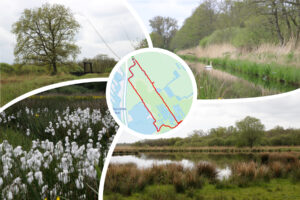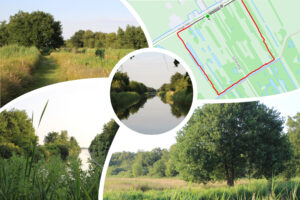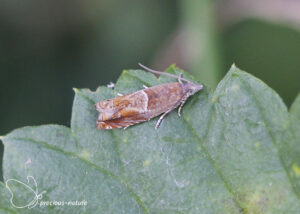There is a pleasure in the pathless woods,
there is a rapture on the lonely shore,
there is a society where none intrudes,
by the deep sea, and music in its roar:
I love not the man less,
but nature more.
(F. Scott Fitzgerald)
Lendevallei (near Wolvega)
The Lendevallei is part of the “wet axis”, a chain of swamp areas on the border of Friesland and Overijssel, and falls under the responsibility of It Fryske Gea. It is a varied swampy area in the brook valley landscape of the Lende and a wet oasis of calmness. There are unique marsh birds to be observed, but also meadow birds, foxes, deer, and many insects. The area is one of my favourites, and I often walk a route of approximately 5.5 km. A variety of day and night butterflies can be found in this area. The Peacock Butterfly, Brimstone, Small Tortoiseshell, Red Admiral, Large Skipper, and Meadow Brown are active in spring and summer. For more special species, I saw the Clouded Yellow, Scarce Swallowtail, and the Sooty Copper. The latter is a vulnerable species, and I have not seen it in this area in recent years.

Easterskar (near Rotsterhaule).
The Easterskar is over 550 hectares in size and comprises grasslands, reedlands, peat bogs, and swamp forests. It would have been closed if the Easterskar nature reserve had not existed. Much of the ‘nature’ was developed for agriculture at the beginning of the last century to combat unemployment. The Easterskar project was planned around 1960, but it was halted due to the increase in industrialisation. The adjacent Westerskar had already been developed, but the Easterskar and its domain of unique plants, birds, butterflies, reptiles and amphibians were spared.
The nature reserve owes its characteristic appearance to peat painting. Peat used to be a commonly used fuel. Excavating the peat was a profitable business in the nineteenth century. Dredging the peat created elongated strips of water in the Easterskar. We also refer to these strips of water as peat holes. Eventually, these holes grew full of plants again. To preserve the characteristic character of this area, It Fryske Gea has restored several peat holes, which also creates additional opportunities for aquatic animals and plants (source: De Friese natuur leeft volop in natuurgebied het Easterskar | It Fryske Gea).
I especially enjoy walking around here early in the evening after I get home from work. The varied area with forests, fens, and a wide canal connecting the fens is an ideal place to relax. Along the water, you will see many dragonflies, damselflies, and a wealth of micromoths in the trees. In terms of butterflies, see in particular the Meadow Brown, Speckled Wood, Red Admiral, Ringlet, Peacock Butterfly, Green-veined White, and Purple Hairstreak.





